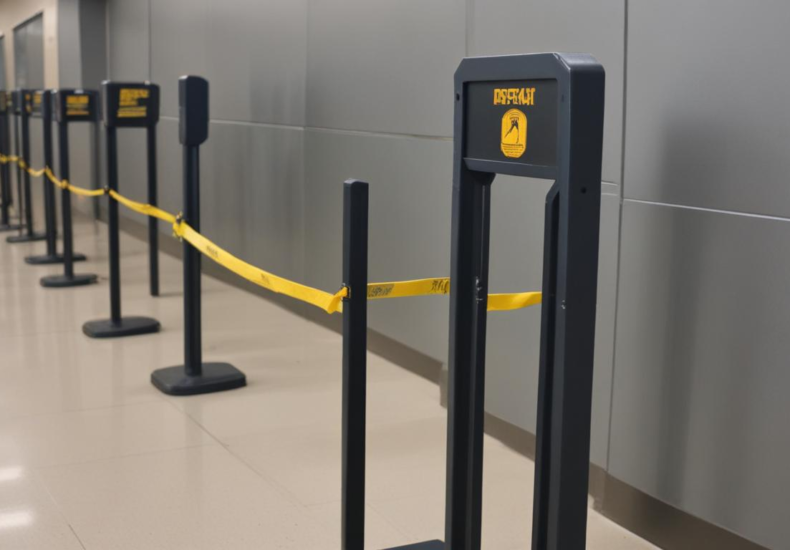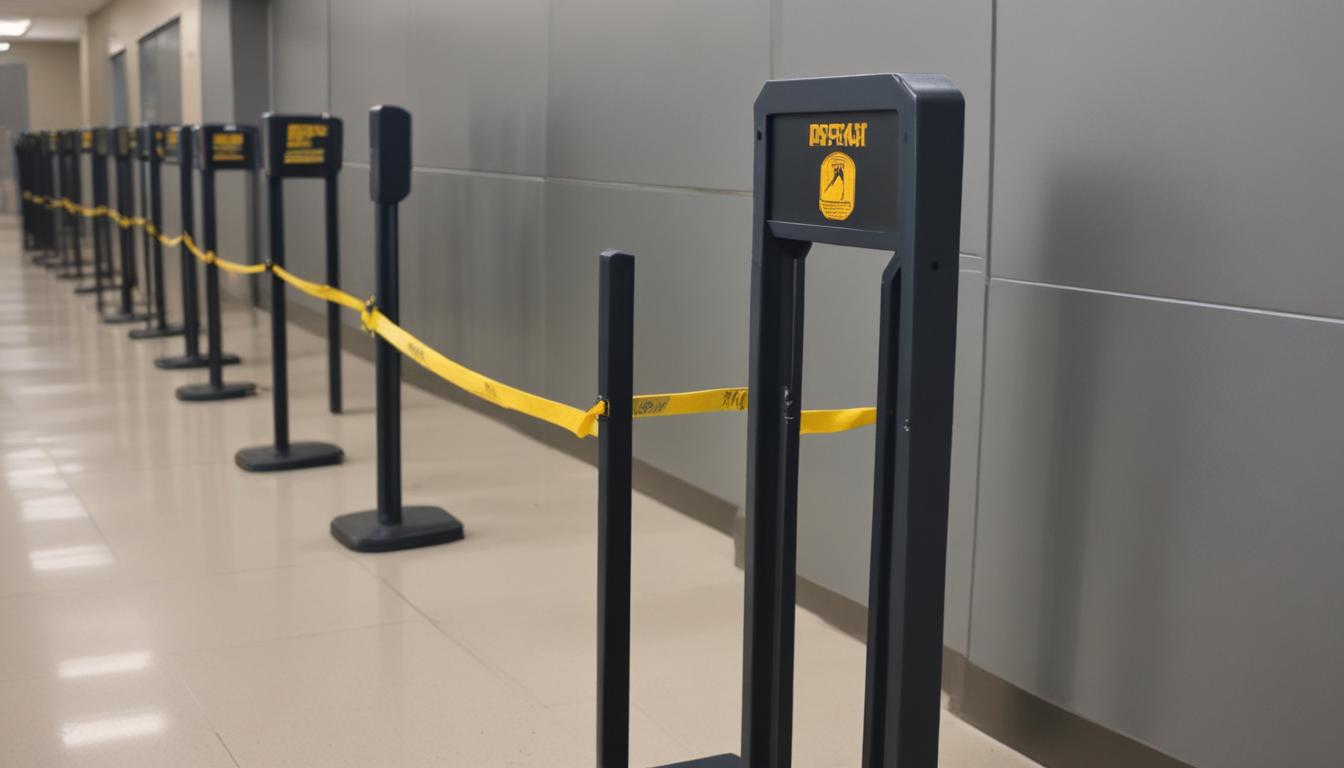
What can metal detectors not detect?
Metal detectors are primarily designed to locate metal objects, but their functionality sharply declines when it comes to non-metallic materials. Objects composed of wood, bone, fiber, glass, and most plastics fall outside the detection limits of standard metal detecting equipment. These materials do not conduct electricity, which is a prerequisite for the detection process used in conventional metal detectors. As a result, non-metal objects remain undetectable, presenting a significant limitation in scenarios where diverse types of materials need to be located. For instance, in archaeological digs or security checks where non-metallic weapons or items might be in use, these limitations necessitate alternative or supplemental detection technologies such as X-ray or advanced imaging systems.
Size and shape limitations
The effectiveness of metal detectors is not only influenced by the material composition of objects but also by their size and shape. Certain small or thinly shaped metal items might escape detection due to their limited mass and reduced disruption of the electromagnetic field used in detection. For example, fine jewelry like thin necklaces or small earrings often pose a challenge for general-purpose metal detectors, falling beyond the detection limits of these devices. Similarly, items with a long, narrow profile, such as needles or certain types of shrapnel, can be aligned in a position that minimizes their cross-sectional interference with the detector’s electromagnetic field, thus evading detection.
This limitation significantly impacts the use of metal detectors in various safety and security applications, where detecting small metal components is critical. Non-metal objects further complicate the scenario, as mentioned, but when even small metal objects can remain undetected, the limitations become even more pronounced. This has led to the development and use of more sensitive detectors or supplementary technologies to cover the gaps left by standard metal detectors. In complex security environments, where even the smallest piece of metal can be a part of a harmful device, this limitation underscores the need for rigorous and diverse scanning protocols.
Detection depth limitations
The effectiveness of metal detectors in pinpointing the location of buried metal objects is not only contingent on the type of metal but also on the depth at which the object is located. Most standard metal detectors have detection depth limitations that can significantly inhibit their performance. Typically, the depth at which a metal detector can sense an object is influenced by several factors, including the size of the object, its orientation in the ground, and the sensitivity of the detector itself.
For instance, larger metal objects can generally be detected at greater depths than smaller ones because they create a stronger disturbance in the electromagnetic field. Conversely, small objects may only be detectable at shallow depths, if at all. This limitation can present challenges in various scenarios, such as in archaeological surveys where important small artifacts might be situated below the detection limits of standard equipment, or in safety inspections where hazardous materials need to be identified, regardless of their depth.
Beyond just size and metal type, the very nature of how metal detectors work introduces fundamental limitations. These devices rely on electromagnetic fields to locate metal objects. As the electromagnetic signal has to penetrate the ground and then return to the detector’s coil, the signal weakens with depth, which naturally limits the detection range. Enhancements in technology, like higher sensitivity settings or multi-frequency systems, can help mitigate this issue but cannot completely overcome the laws of physics that ultimately govern these devices.
Lastly, the soil composition plays a crucial role in depth detection. Soils with high mineral content can cause false signals and decrease the penetration depth of electromagnetic signals. This is a significant barrier in areas with naturally mineral-rich soils, where the detection capabilities can be severely compromised, leaving some metal objects undetectable at sufficient depths. Such limitations emphasize the need for continuous advancement in metal detection technology to enhance depth penetration capabilities and overall detection efficacy.
Material conductivity and orientation

The ability of a metal detector to locate an object is significantly influenced by the material’s electrical conductivity as well as its orientation relative to the detector’s coil. Highly conductive metals such as silver, copper, and gold produce strong and clearly identifiable signals. Conversely, metals with lower conductivity like stainless steel or lead may not generate signals that are as strong or easily detectable, thereby setting intrinsic detection limits based on material properties.
Orientations of objects play another crucial role in detection capabilities. For example, a metal object oriented vertically may present a smaller cross-sectional area to the detector’s electromagnetic field and thus may be more challenging to detect than if it were lying horizontally. This orientation effect can lead to situations where identical objects may or may not be detected, simply based on how they are positioned relative to the ground or the detecting coil. This variability introduces significant challenges, not just in metal detection hobby scenarios but also in professional applications like security screening or geological surveying, where unawareness of an object’s orientation can lead to false negatives.
This orientation-related limitation is particularly pronounced with irregularly shaped or elongated objects, which might only be detectable when positioned in one dimension. Therefore, finding such objects often requires multiple passes over the same area from different angles, increasing the time and effort needed to conduct thorough scans. Certainly, these limitations can complicate procedures in environments where precise and reliable detection of metal objects is paramount.
The combination of material conductivity and orientation underscores the inherent limitations of standard metal detectors. These factors necessitate the continuous development of detection technologies, including the integration of systems capable of compensating for such variability. Techniques like the use of multiple coil systems or advanced signal processing software are potential ways to mitigate these limitations, enhancing the overall effectiveness of metal detectors in various practical situations.
Environmental factors affecting detection
The performance of metal detectors is also significantly influenced by various environmental factors. For example, the ground composition, temperature, and moisture levels can all affect detection efficiency. In areas with high salinity, such as coastal beaches or salted roads in winter, the increased conductivity of the ground can cause numerous false signals or “noise,” complicating the detection of actual metal objects. This high conductivity can mask signals from smaller or less conductive items, thus expanding the detection limits in unfavorably mineralized soils.
Similarly, soil that is heavily mineralized with iron oxides or other metallic compounds can severely limit the depth and accuracy with which metal objects are detected. The presence of these minerals can generate constant false signals that confuse the detector, often leading to inefficient searches and missed detections. This is a significant concern for metal detecting enthusiasts who explore historical or natural areas where such soil types are prevalent.
Temperature fluctuations also play a role in metal detector sensitivity and functionality. Extreme temperatures can affect the electronic components and the battery life of detectors, potentially leading to less reliable operation. Cold environments can slow down the electronic circuits within detectors, while extreme heat might cause components to overheat, risking damage or failure. These temperature-related limitations can be a hurdle during metal detecting expeditions in harsh climatic conditions.
Moisture levels, too, have a direct impact on the operation of metal detectors. Wet conditions can enhance the conductivity of the ground, particularly in clay-heavy soils, which can improve detection depth. However, this can also lead to an increase in false positive detections where the detector signals metal when there is none. Rain, fog, or even high humidity can change the conductivity of the air and the ground, impacting the electromagnetic field and, consequently, the detector’s efficiency.
Lastly, the presence of nearby power lines or other electronic devices can create electromagnetic interference that disrupts the normal operation of metal detectors. Such interference can make it difficult to locate smaller or deeper non-metal objects amidst the various signals being erroneously picked up by the detector. Practitioners must often adjust their equipment to minimize these effects, which can be challenging and time-consuming, further highlighting the environmental limitations encountered in metal detection activities.
Understanding and mitigating the impacts of these environmental factors are crucial for enhancing the effectiveness of metal detectors. Developing and utilizing technology that can adapt to or compensate for varying environmental conditions is essential for advancing the capabilities of metal detection equipment, ensuring more accurate and reliable results despite the inherent limitations.
You may also like
Archives
Calendar
| M | T | W | T | F | S | S |
|---|---|---|---|---|---|---|
| 1 | 2 | |||||
| 3 | 4 | 5 | 6 | 7 | 8 | 9 |
| 10 | 11 | 12 | 13 | 14 | 15 | 16 |
| 17 | 18 | 19 | 20 | 21 | 22 | 23 |
| 24 | 25 | 26 | 27 | 28 | 29 | 30 |
Leave a Reply